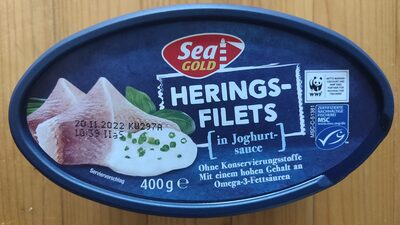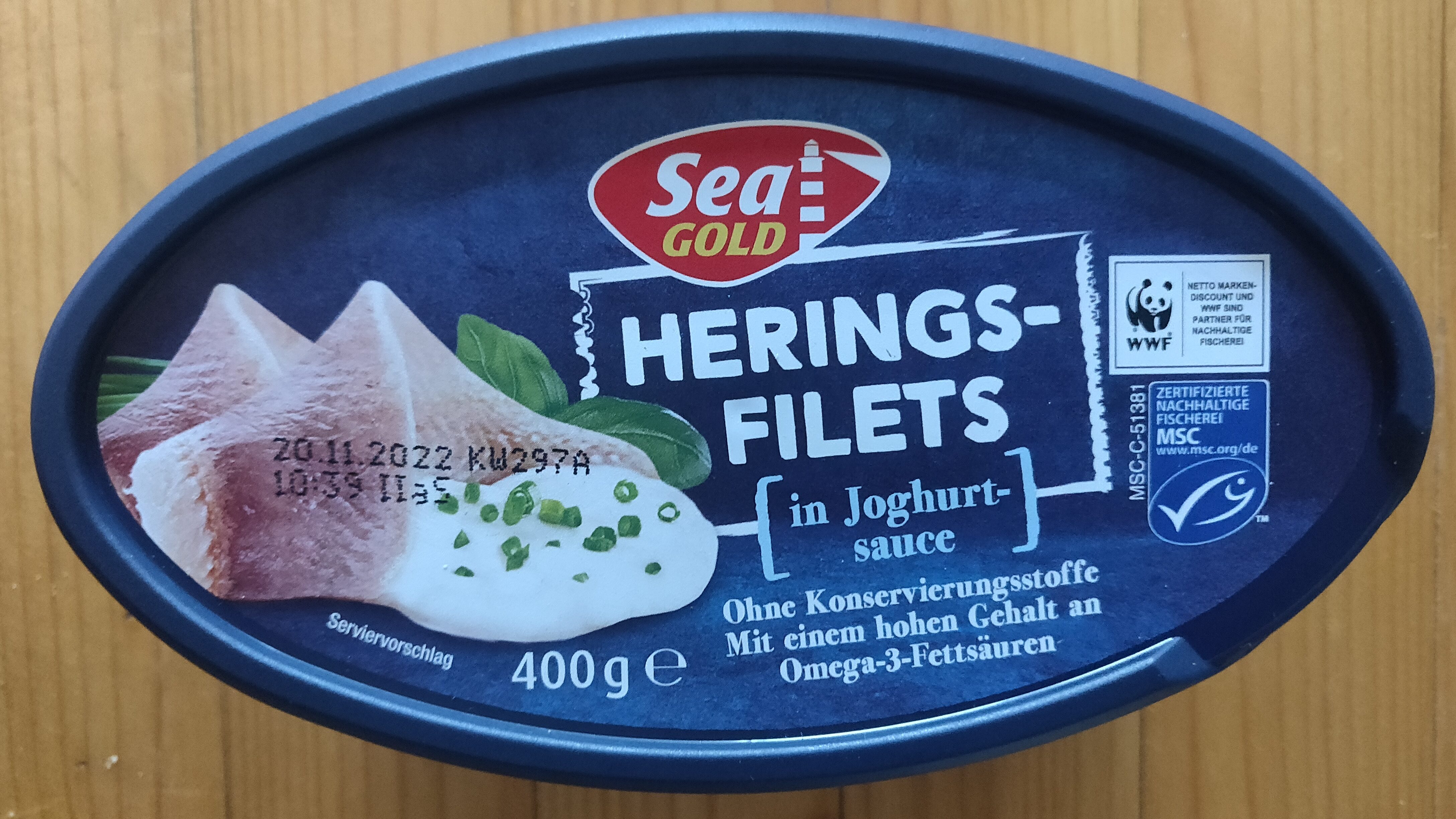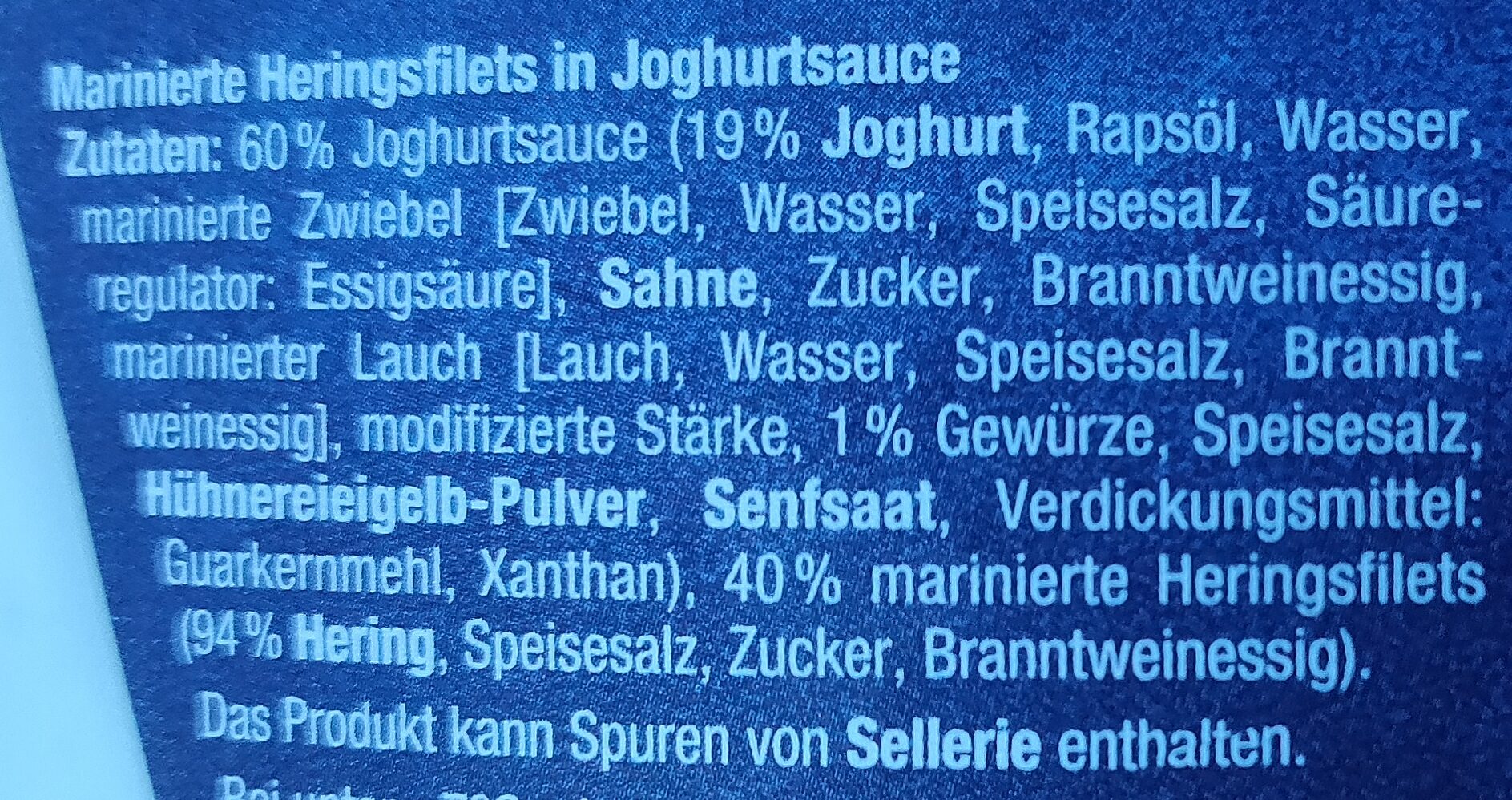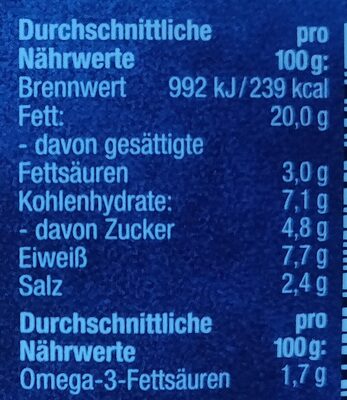Heringsfilet in Joghurtsauce - Sea Gold - 400 g
Barcode: 4316268647502 (EAN / EAN-13)
Quantity: 400 g
Packaging: Plastic, Film, Lid, Tray
Brands: Sea Gold
Categories: Seafood, Fishes and their products, Fishes, Fish fillets, Herring fillets
Labels, certifications, awards:
Sustainable, Sustainable fishery, No preservatives, Omega-3, High in Omega 3, Sustainable Seafood MSC
Origin of ingredients: Atlantic Ocean, North-East Atlantic Ocean, Faroe Islands, Iceland
Traceability code: MSC-C-51381, PL 12011803 WE
Stores: Netto Marken-Discount
Countries where sold: Germany
Matching with your preferences
Report a problem
Data sources
Product added on by prepperapp
Last edit of product page on by emiljunker.
Product page also edited by roboto-app.














